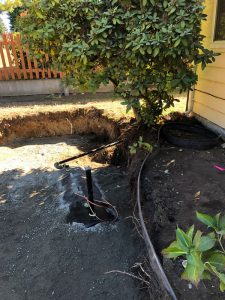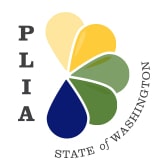Residential
Left Coast Services offers residential oil tank services that have brought peace of mind to many homeowners. The following topics represent services that are most in demand.
Left Coast Services can install any size home heating oil tank required to meet your residential needs. This includes plumbing a new ventilation and fill pipe and connection onto your existing copper oil lines.
Standard Residential Tank Dimensions and Conversion Charts:
Left Coast Services can install your home heating oil tank above ground. New tanks come equipped with new ventilation and fill pipes, a fuel level gauge, and anti-siphon valve.
If space is limited, in some cases these tanks can be installed indoors with plumbing routed to the exterior for oil company convenience.
Left Coast Services provides expertise when it comes to addressing your leaking oil tank. We have years of experience with consultations and hundreds of past cleanups to call on when discussing remedial action of your contaminated soil.
We work directly with the Department of Ecology and the Pollution Liability Insurance Agency as a preferred service provider to help eliminate your concerns.
The Pollution Liability Insurance Agency will is longer be accepting new registrations since July 1st, 2020, for the $60,000.00 in free coverage that is available currently to help with your heating oil tank release. PLIA’s new Loan and Grant Program will provide financial assistance to heating oil tank owners and operators. The Heating Oil Loan and Grant Program will provide up to $75,000.00 for heating oil tank owners to upgrade, replace, decommission, or remove heating oil tank systems. PLIA is no longer accepting applications for the Pilot Heating Oil Loan and Grant program. Call us at 206-762-7500 for more information or visit their link below to register your home.
Left Coast Services provides underground tank removal from your property.
LCS will decommission your tank by removal. This process begins with a utility locate and permit approval from your local jurisdiction. The tank will be exposed, cut and cleaned down to the raw steel before it is removed from the ground. During this process LCS will remain conscious of your concerns regarding all landscaping impact. Once the tank has been removed, the excavation is back filled to grade and the property is restored as close to it's original appearance as possible.
Upon completion, LCS will provide copies of all necessary decommissioning documentation and certification required.
Left Coast Services provides Tank Decommissioning In Place.
When space is limited due to obstacles such as driveways, home additions, fencing, walkways or precious landscaping, a decommissioning in place is often the perfect route to closure. This process includes pumping your tank free of any residual product, triple rinsing, and filling of the tank in place with a 2 way polyurethane foam. Once the foam product has hardened, the tank is sealed with the ventilation and fill pipe cut below ground surface and capped with concrete mortar.
Upon completion, LCS provides copies of all certification and documentation required by your local governing agencies.
Left Coast Services is happy to visit your property if you are unsure of the existence of an oil tank on site. Using metal detectors, manual ground probing rods and experience, we will thoroughly inspect your property from the interior to the exterior to determine the presence or lack of a buried tank.
If an abandoned tank is found we will provide you with an estimate for removal or filling of the tank in place if desired. If there are no signs of a tank, we will issue documentation stating the specifics of our visit and written opinion as professionals to help you move forward with closure.
Left Coast Services provides Bioremediation on demand for customers looking to address surface level contamination on a budget. A liquid application is distributed where the hottest concentrations of contaminated soil are found from a tank release. The treatment of soil with Bioremediation is both less expensive and less impactful than the alternative of excavation with heavy machinery. Periodic soil sampling is recommended to follow progress.


















